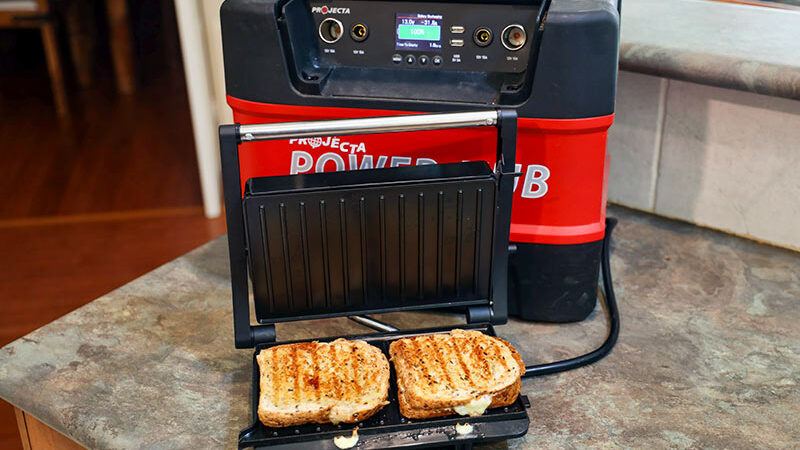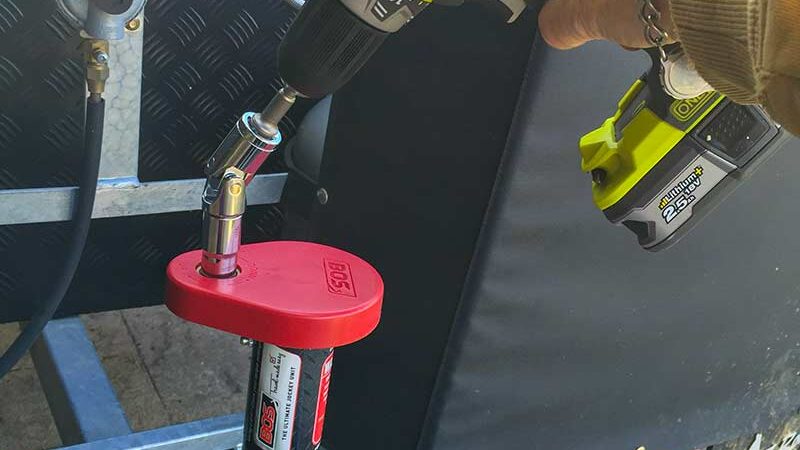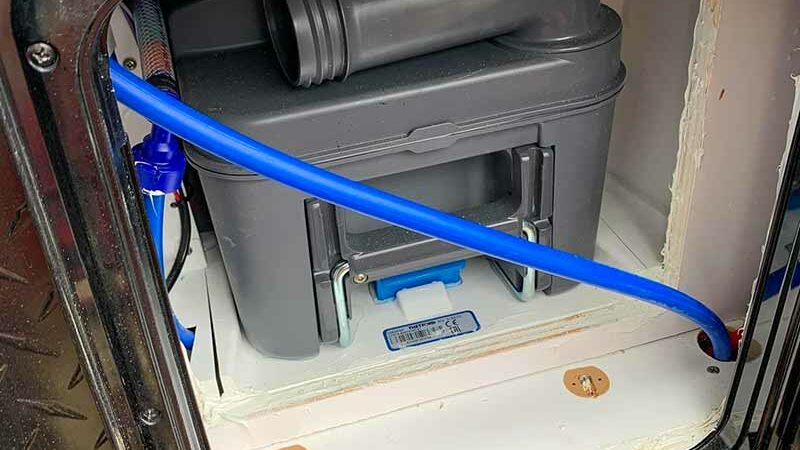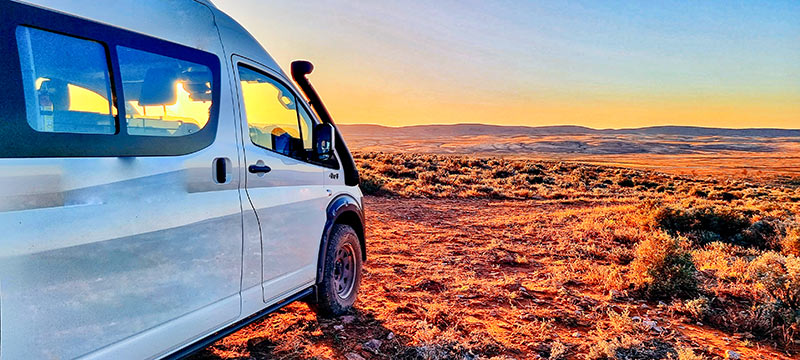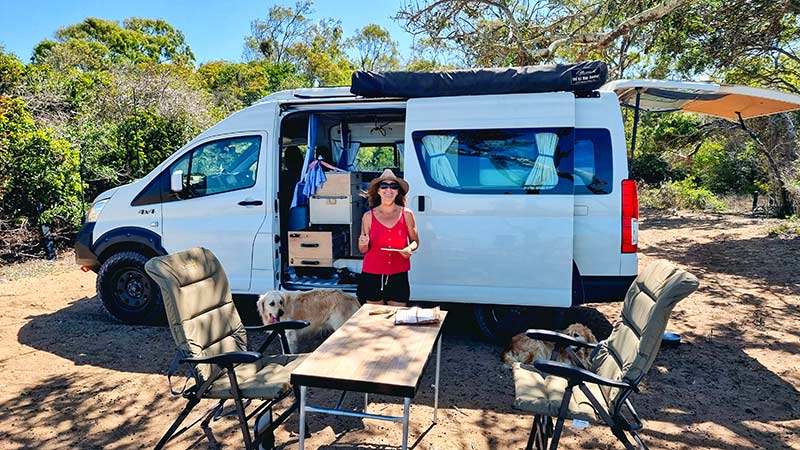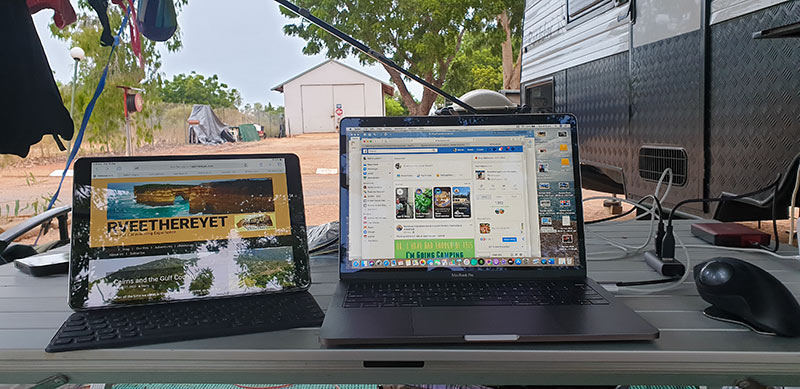Ten Mistakes in the Bush
Many people make common mistakes when planning or taking a holiday in the Australian bush. Some will cause nothing more than an inconvenience, others will be life-threatening. Some will void your warranty and insurance, and others will just set you back lunch money.
The more you know about others’ mishaps, the less likely you are to make the same blunder. I have made some of the following errors of judgment, and I’ve seen them dozens of times by others.
Read on, take it all in and learn so that you’re not the next casualty…
OVERLOADED
So much is written about GVM upgrades, not overloading caravans or trailers, as well as seeing bent and busted vehicles left trackside. The ramifications, both expense and legalities, can be devastating, so ensuring you are well-versed in what you can carry in, on or behind your vehicle is extremely important and ultimately up to each driver.
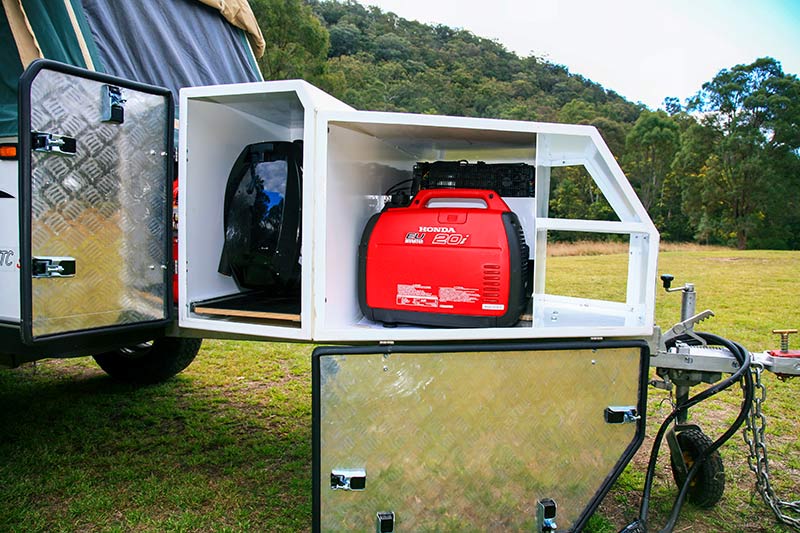
Everyone’s vehicle, van and travelling setup are unique, so visiting a weighing station is highly recommended for your safety, that of your occupants, and all other road users.
There is a fine line between packing enough gear and too much. Whether it’s spare parts or the kitchen sink, consider if you can physically cart it in your setup.
Do you need to carry an extra spare leafspring, or should you ensure the suspension is in tip-top condition before leaving and keep those weight savings up your sleeve?
UNDER-PREPARED IN THE BUSH
This is the flipside of overloading. Not taking enough of anything to do the job properly is a consequence of not understanding what is needed, be it enough food and water to survive, enough fuel to go the distance, enough tools to affect mechanical repairs, or enough spare parts to facilitate regular maintenance.
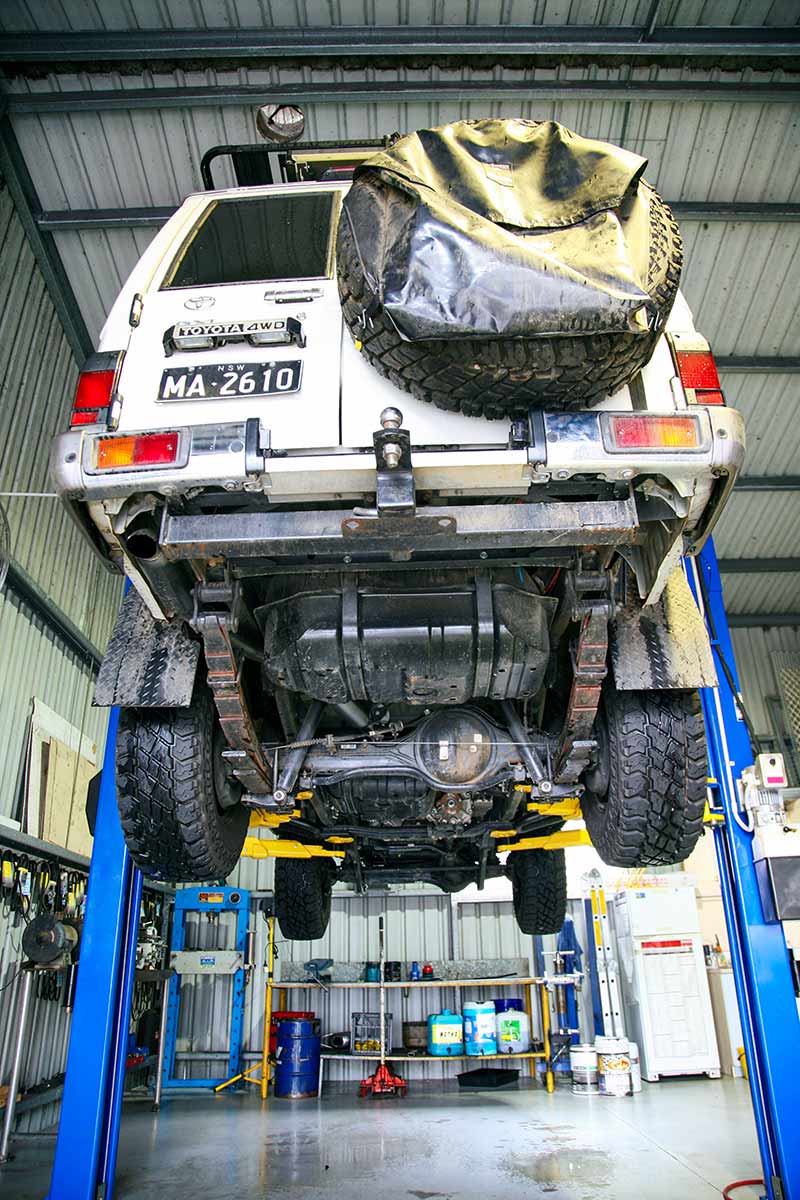
This problem exists even before leaving the safety of home. Not knowing how to use your mapping devices or how to perform first aid are also a form of under-preparation.
If you’re not mechanically inclined, or even if you are, it’s a great idea to have your vehicle looked over by a mechanic who is well-versed in outback travel and preventative maintenance, before heading into the bush.
LOST IN THE BUSH
In this high-tech age, there really is no excuse for becoming ‘geographically misplaced’. There are dozens of free and paid apps that’ll do a stellar job of navigating you to a known point and pinpointing where you are in the countryside.
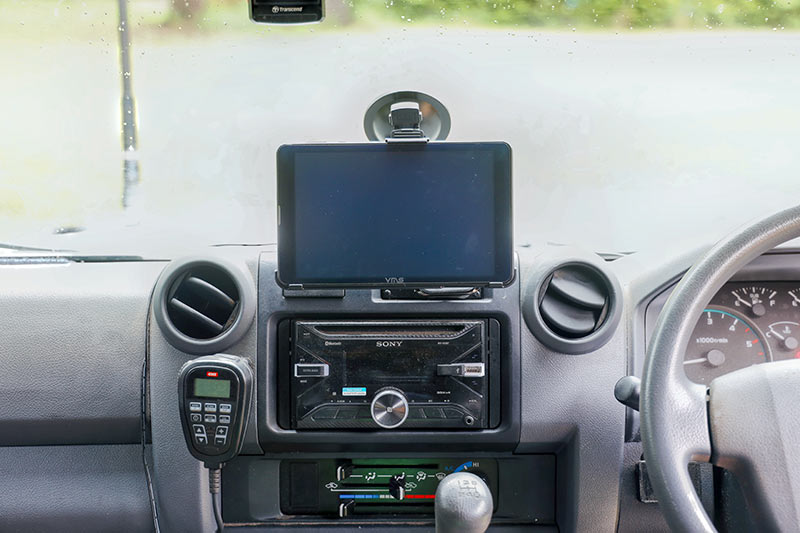
We’ve all heard of the tribulations of relying on Google Maps that might send you up the garden path. I can assure you that plenty of other mapping devices and systems can have the same problem, so I’d advise, as I do in practice, running more than one system at a time.
Also, pay attention to your surroundings. If, for example, the major dirt track you should be on has dwindled into a two-wheeled goat track, it might suggest you’re not where you are supposed to be.
Paper maps and the know-how to use them can also be used as a back-up but, in my experience, fewer and fewer people either bother or know how to read them. Perhaps a refresher course is in order!
CAN’T FIX IT
Not every traveller can be expected to fix everything on their vehicles; we all have strengths and weaknesses, right? But if you’re planning on travelling remotely, you really owe it to yourself and those with you to have a basic set of MacGyver skills so that you’re ready to fix the unexpected.
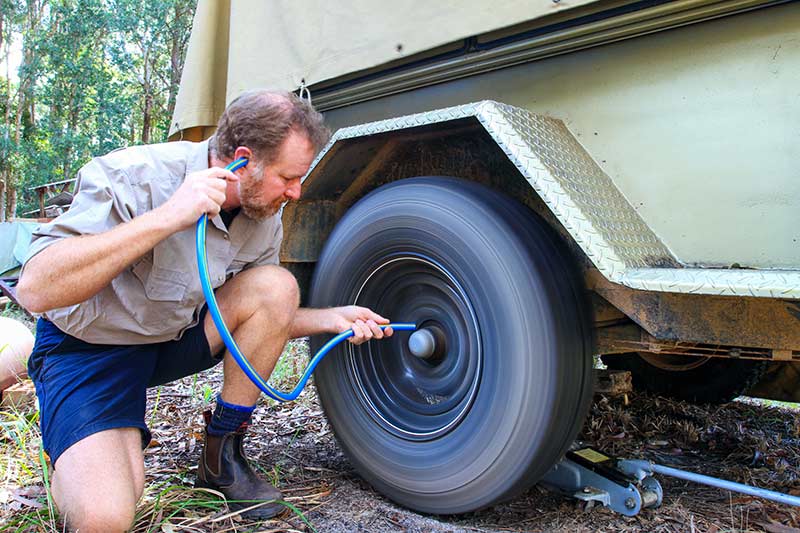
Of course, carrying the correct tools and knowing how to use them is essential. Also, you should carry an array of bush-mechanic essentials, such as wire, cable ties, various tapes, ropes, and straps.
Even if you can’t fix something, if you have the tools on board, there is always the opportunity to get help from other travellers without them having to break out their kit.
FIRST AID
I always plan on two types of first aid. The first relates to the vehicle and caravan. As we touched on in the points above, if you have the tools, the parts, and the know-how, you have a great chance of repairing a problem. Let’s not forget a fire extinguisher while we’re at it. Every vehicle and caravan should have one.
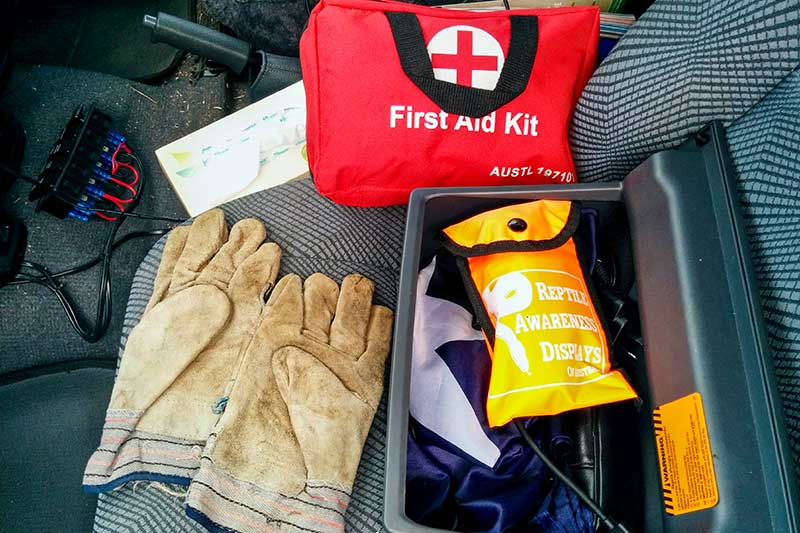
The other type of first aid relates to your personal health. Always carry a personal first aid kit. Don’t rely on a packet of Band Aids and Panadol shoved in the glovebox to get you through. There are plenty of great commercial first aid kits on the market, as well as books and apps to guide you through most emergencies.
Remote-area and snake bite kits are ideal, and they should include extra personal medications and inclusions for individual applications.
Completing a first aid course may save a life on the road, and most towns and centres offer opportunities to learn the latest techniques.
COMMUNICATIONS IN THE BUSH
Consider short, medium and long-distance communications for every trip you take, regardless of how remote you may or may not be.
While understanding the remote-area restrictions of a mobile phone, never discount where you might get a glimpse of reception to send a message, or call a loved one or first-responder (just don’t rely on it). Consider a phone booster as an inclusion; while it can’t generate a signal where there is none, they can boost a low signal into a usable service.
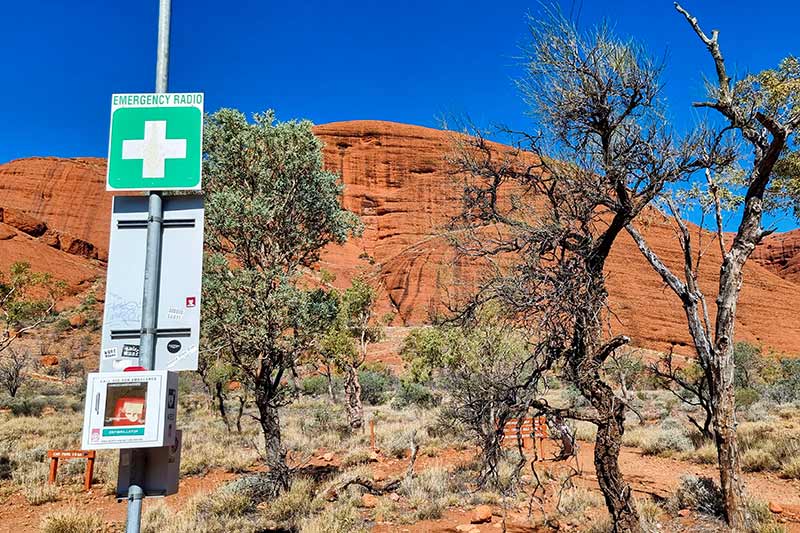
UHF radios are great for car-to-car convoy communications and contacting other road users and travellers. Knowing how to take advantage of repeater stations and channels can greatly extend their use.
Emergency location devices and trackers are ideal emergency tools when you go bush. Some can allow loved ones to keep track of where you are and provide a messaging service to authorities.
StarLink is the latest and greatest form of communication, allowing contact with the outside world almost anywhere. As well as using it for general internet connectivity, the ability to send and receive most forms of modern technology is superb.
RECOVERY SKILLS
It’s all very well mounting a set of orange traction boards to your roof rack, but knowing how and when to use them is vital. The same goes for electric winches, snatch straps, shackles, and even a tyre gauge.
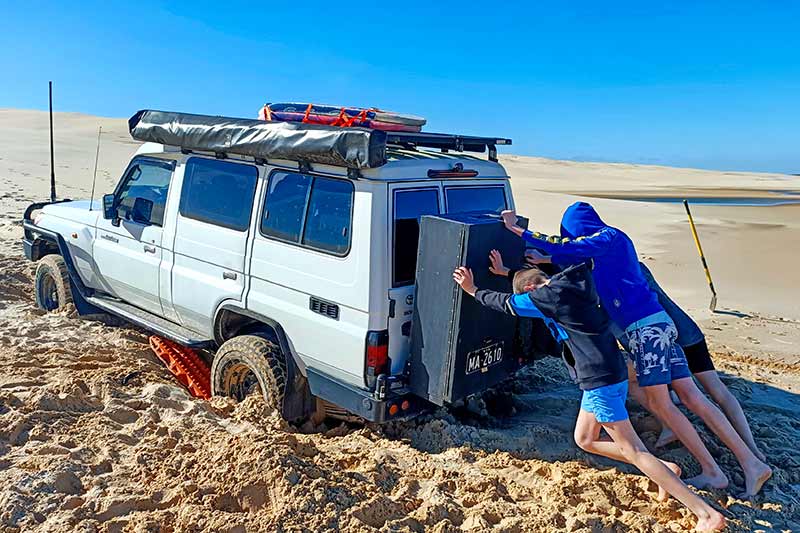
They all help to get you unstuck one way or another, but knowing the restrictions and safety parameters should be learnt well before needing them out in the wilds. Getting it wrong with some of these items can be a life-ending mistake, so consider a course to learn from the experts.
UNDERSTANDING YOUR 4WD
Most older-style 4WDs essentially work the same, with similar systems to activate four-wheel-drive and low range. Once 4WD was engaged, and low or high range was selected, it was then up to the driver and their skills to negotiate a track or obstacle.
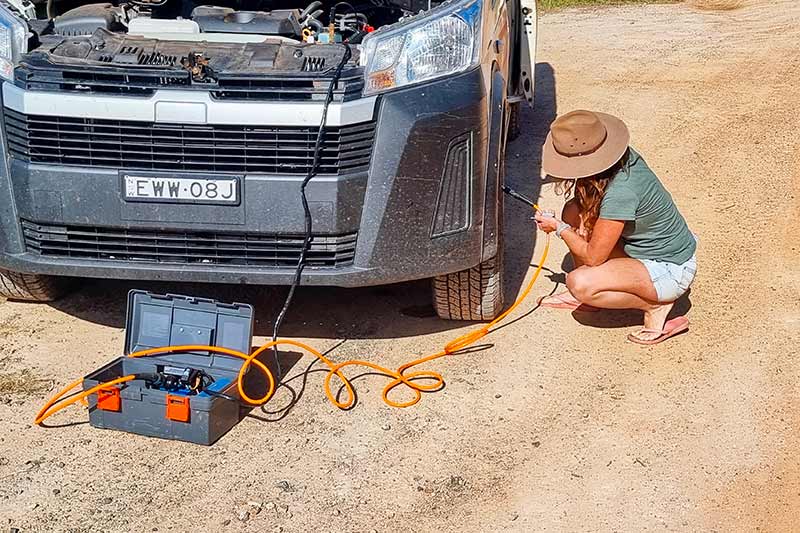
With the latest and greatest electronic measures available to help get a 4WD further down a track, it’s more pertinent to know precisely what your vehicle has inbuilt from the manufacturer with regard to get-out-of-jail-free, terrain-freeing systems.
Some have dirt driving modes, snow, rock and slippery surface modes, suspension height variations, engine rev limitations and enhancements, and any extra aftermarket systems like differential locks you might employ. A simple flick of a switch or twist of a dial might be all that is needed to get you unstuck. Read your manual or speak to the pros to learn about your vehicle.
SLOW DOWN
We all like to sit on the maximum speed limit while hurtling along the freeways and well-formed bitumen roads. That’s all well and good, provided the situation and conditions allow.
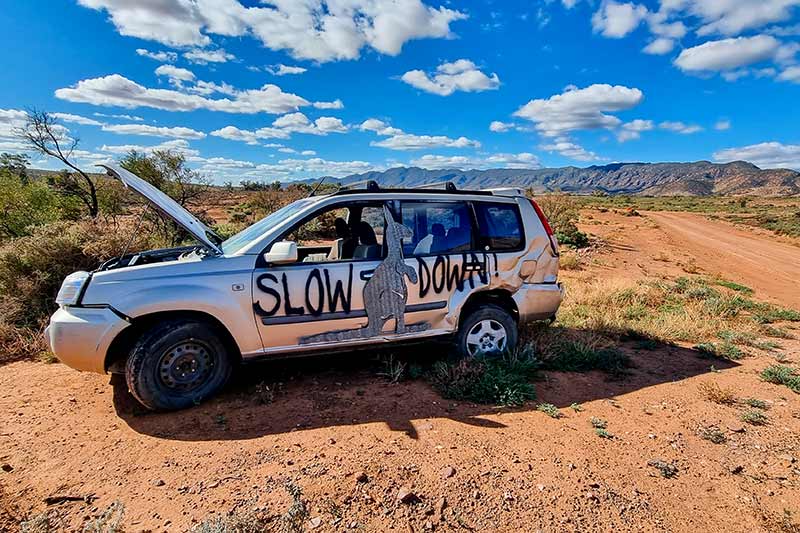
But handling a few tonnes of vehicle, including trailers or caravans tacked on at speed on a dirt track, takes more skill. Throw in corrugations, washouts, bull dust or any other constantly varying road surface, and it makes for a dangerous situation in the hands of the untrained.
The easiest way to keep safe in the bush in these situations is to slow down, way down at times. Obviously, you can’t crawl along a major corrugated outback track at a snail’s pace. First, that’s the wrong way to tackle corrugations, and second, you’ll be creating an unsafe situation for other road users trying to get past you either from in front or behind.
Drive to both your abilities and the road conditions, and consider the traffic around you.
PAYING ATTENTION
Here’s one more point for good luck: lack of attention to your surroundings, including your caravan, your vehicle, your and your fellow travellers’ health and well-being, and where you are on planet Earth.
Paying attention to everything is vital to the ongoing longevity of all things mechanical and personal safety. The second you hear something odd or different from your engine bay, under the vehicle or caravan, or even inside the vehicle or van should alert you to the potential failure of something.
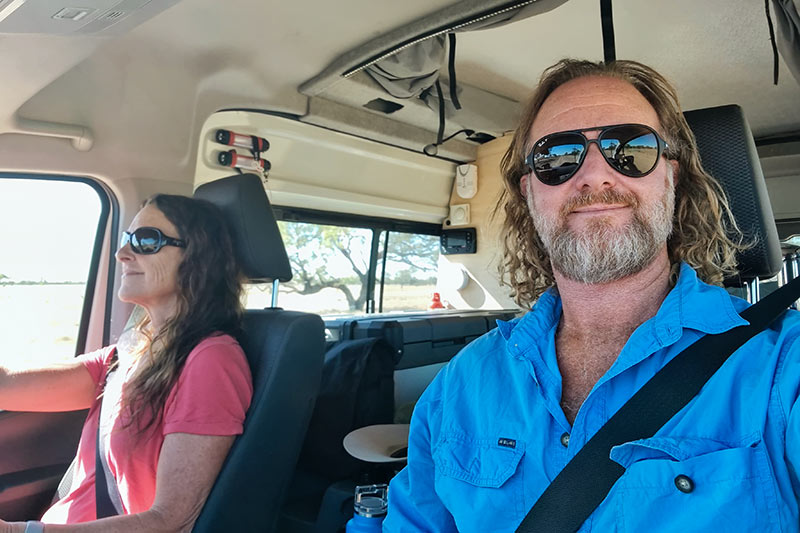
It may be as simple as a rope or strap has loosened, allowing a piece of equipment to rattle in the back of your ute, or as complex as a slight rattle from the number four injector under the bonnet or a grumble from a trailer bearing. Yes, you should be able to tighten the strap to prevent damage to whatever it was holding and adjust or re-grease a bearing. No, you probably can’t fix the injector on the side of the road, but at least have it looked at as soon as possible to prevent major surgery and huge numbers from being dished out of your wallet. The sooner you get onto a problem or potential problem, the better.
A prime example is a slow-leaking tyre. You may hear it as you walk past, or you may notice the sidewall slightly bagging more than the other tyres in your outfit. Either way, if the leak is fixed quickly or changed with the spare, less damage will be done to that deflating tyre, and it is more likely you can make a simple repair instead of buying a completely new tyre.
It’s similar to taking note of your travel companions, loved ones, mates, or even random fellow travellers. If it’s a stinking hot day and you note ol’ mate struggling on a bush walk, suggest he have a little rest or offer a drink in the shade.
If your partner in the passenger or driver’s seat is getting a little irritable or short-tempered, consider an impromptu roadside break to lighten the mood or feed the hunger pains. Offer a little trackside dance, a hand-in-hand walk, or hell, go in for a romantic pash to help bring a smile and spark back. No, I’m not a marriage councillor, but the more attentive you are to people’s physical and mental health, and the more you can subtly help, the better off we’ll all be.
Perhaps a simple driver/passenger swap will help. After all, each person should be able to operate the vehicle you’re travelling in.
So, there you have it. There are a good few fistfuls of the things we often get wrong while going bush. I could double or even triple this list, but hopefully it will get you thinking about working on your own list of mistakes, shortcomings, or stuff-ups that could be rectified for your next trip away.
The more mindful you are of this list, the more you’ll enjoy a trouble-free outback holiday.
Mark’s wise words to remember: it’s not about being perfect, but being perfectly capable of learning from others and your mistakes. Try to have a backup plan for as many situations as possible. If that plan doesn’t work, change plans. Simple!
The post Ten Mistakes in the Bush appeared first on GoRV.

